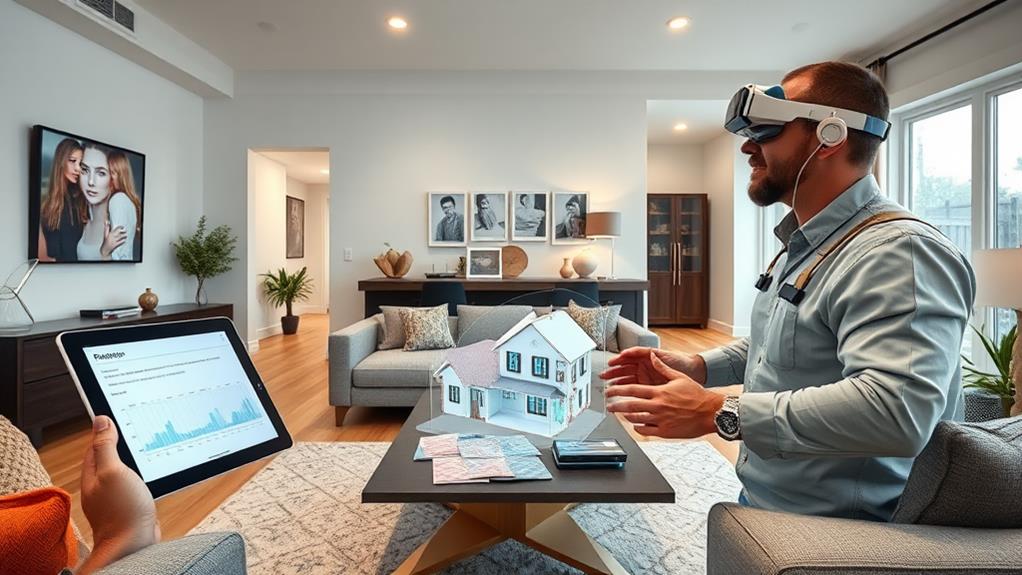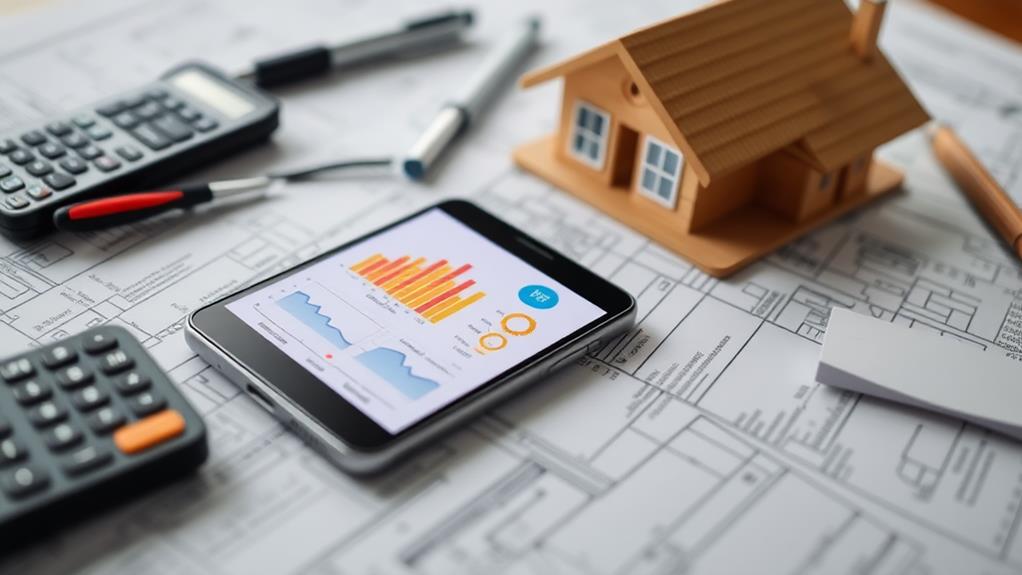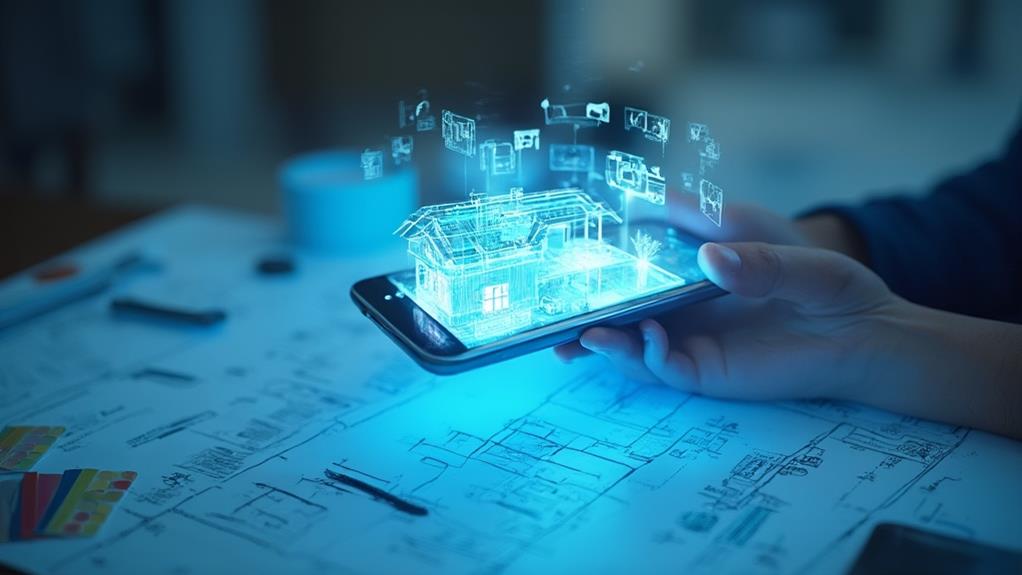Technology has revolutionized project management in home renovations, offering powerful tools to streamline processes and enhance outcomes. Project management software provides centralized hubs for task organization and collaboration. 3D modeling tools enable precise visualizations and spatial planning. Budget tracking applications offer real-time financial insights and expense categorization. Communication platforms facilitate instant messaging and file sharing among renovation teams. Smart home integration planning ensures compatibility and future-proofing of connected devices. These technological solutions address various aspects of renovation projects, from design and budgeting to team coordination and implementation. By leveraging these innovative tools, homeowners and contractors can significantly improve efficiency and achieve superior results in their renovation endeavors.
Project Management Software Solutions

Streamlining home renovation projects requires efficient tools, and project management software solutions offer a comprehensive approach to organizing tasks, resources, and timelines. These digital platforms provide a centralized hub for all project-related information, enabling contractors, homeowners, and subcontractors to collaborate seamlessly.
Popular software options like Trello, Asana, and Monday.com offer intuitive interfaces that allow users to create task boards, assign responsibilities, and track progress in real-time. These tools often include features such as file sharing, budget tracking, and automated notifications, ensuring all stakeholders remain informed throughout the renovation process.
For more complex projects, specialized construction management software like Procore or BuilderTrend provide industry-specific features, including blueprints and 3D modeling integration. These solutions can help identify potential conflicts or delays before they occur, saving time and money.
Mobile compatibility is another crucial aspect of modern project management software, allowing on-site workers to update progress, report issues, and access important documents from their smartphones or tablets. This real-time communication reduces delays and improves overall project efficiency, ultimately leading to smoother, more successful home renovations.
3D Modeling and Visualization Tools
In the realm of home renovations, 3D modeling and visualization tools have become indispensable assets for project managers and homeowners alike. These cutting-edge technologies enable the creation of detailed, interactive representations of renovation projects, allowing stakeholders to explore and refine designs before implementation.
Popular software options like SketchUp, AutoCAD, and Revit offer intuitive interfaces for developing accurate 3D models of interior and exterior spaces. These tools facilitate precise measurements, material selection, and spatial planning, reducing errors and minimizing costly changes during construction.
Virtual reality (VR) and augmented reality (AR) applications further enhance visualization capabilities. VR headsets allow clients to experience renovated spaces in immersive 3D environments, while AR apps overlay digital elements onto real-world views through mobile devices. These technologies help bridge the gap between conceptual designs and final outcomes, improving client satisfaction and decision-making.
Additionally, 3D rendering software produces photorealistic images of proposed renovations, enabling project managers to create compelling presentations and marketing materials. By leveraging these advanced tools, professionals can streamline communication, increase efficiency, and deliver superior results in home renovation projects.
Budget Tracking Applications

The cornerstone of successful home renovation project management lies in effective budget tracking. Budget tracking applications have revolutionized the way homeowners and contractors monitor expenses throughout the renovation process. These digital tools provide real-time financial insights, allowing users to track costs, compare actual expenses to projected budgets, and make informed decisions to prevent overspending.
Popular budget tracking applications offer features such as expense categorization, receipt scanning, and customizable reporting. Many integrate with accounting software, simplifying bookkeeping and tax preparation. Advanced apps incorporate machine learning algorithms to predict potential cost overruns and suggest cost-saving alternatives. Some even offer collaboration features, enabling homeowners and contractors to share financial information seamlessly.
When selecting a budget tracking application for home renovations, consider factors such as user interface, mobile accessibility, and integration capabilities. Look for apps that offer project-specific templates and the ability to set spending alerts. By leveraging these technological tools, homeowners can maintain better control over their renovation budgets, reduce financial stress, and ultimately achieve their desired outcomes within financial constraints.
Communication Platforms for Renovation Teams
Effective communication's importance in home renovation projects cannot be overstated. Modern technology offers numerous platforms to facilitate seamless interaction among renovation teams, homeowners, and contractors.
Project management software like Basecamp, Asana, or Trello provide centralized hubs for task assignments, progress tracking, and file sharing. These platforms enable real-time updates and notifications, ensuring all team members stay informed about project developments.
For instant communication, messaging apps such as Slack or Microsoft Teams offer dedicated channels for specific aspects of the renovation, allowing for quick problem-solving and decision-making. Video conferencing tools like Zoom or Google Meet prove invaluable for virtual site visits, design consultations, and team meetings, especially when in-person gatherings are impractical.
Cloud-based document sharing services, including Google Drive or Dropbox, facilitate easy access to project plans, contracts, and specifications. These platforms ensure that all stakeholders work from the most up-to-date information. Additionally, specialized construction management software like Procore or CoConstruct offers features tailored to renovation projects, including RFI (Request for Information) management, daily logs, and photo documentation capabilities, further enhancing communication efficiency throughout the renovation process.
Smart Home Integration Planning

As renovation projects increasingly incorporate advanced technology, smart home integration planning has become a key consideration for homeowners and contractors alike. This process involves strategically incorporating connected devices and systems into the renovation design to enhance comfort, efficiency, and functionality.
Smart home integration planning begins with assessing the homeowner's needs and preferences. This includes identifying desired features such as automated lighting, climate control, security systems, and entertainment setups. Contractors must then evaluate the existing infrastructure and determine necessary upgrades to support these technologies, such as rewiring or installing new electrical outlets.
Compatibility is crucial when selecting smart home devices and systems. Project managers should research and recommend products that work well together and align with popular platforms like Apple HomeKit, Google Home, or Amazon Alexa. Additionally, they must consider future-proofing the home by choosing scalable solutions that can accommodate technological advancements.
During the planning phase, it's essential to address potential challenges such as network connectivity, data privacy, and user-friendly interfaces. Collaborating with specialized smart home integrators can ensure seamless implementation and provide homeowners with comprehensive training on their new systems.
Frequently Asked Questions
How Can I Ensure Data Security When Using Cloud-Based Project Management Tools?
To ensure data security with cloud-based project management tools, implement strong passwords, enable two-factor authentication, encrypt sensitive information, regularly update software, control user access, and choose reputable providers with robust security measures and compliance certifications.
What Skills Are Needed to Effectively Use Advanced Renovation Technology Tools?
To effectively use advanced renovation technology tools, key skills include digital literacy, adaptability, and basic technical proficiency. Understanding project management principles, data interpretation, and collaborative software usage are also crucial. Continuous learning and openness to new technologies are essential.
Are There Any Legal Considerations When Implementing Smart Home Technologies?
As smart home technologies pave the way for a connected future, legal considerations loom large. Privacy laws, data protection regulations, and liability issues must be carefully navigated when implementing these systems to ensure compliance and protect homeowners' rights.
How Can I Measure the ROI of Investing in Project Management Technology?
To measure ROI of project management technology investments, track key performance indicators such as time saved, cost reductions, improved efficiency, and increased productivity. Compare these metrics to the initial investment and ongoing costs to determine the overall financial impact.
What Are the Potential Drawbacks of Relying Heavily on Technology in Renovations?
Like a double-edged sword, relying heavily on technology in renovations can lead to:
- Over-dependence on digital tools
- Reduced hands-on skills
- Potential technical glitches
- Decreased personal interaction
- Cybersecurity risks
- Increased upfront costs
These drawbacks can impact project efficiency and quality.
Conclusion
Technology has revolutionized home renovation project management, offering solutions that enhance efficiency, communication, and visualization. From specialized software to 3D modeling tools, these advancements streamline processes and reduce errors. Interestingly, a study by McKinsey & Company found that large construction projects typically take 20% longer to finish than scheduled and are up to 80% over budget. By leveraging technology, homeowners and contractors can mitigate such risks, ensuring more accurate timelines, better budget control, and improved overall project outcomes.

